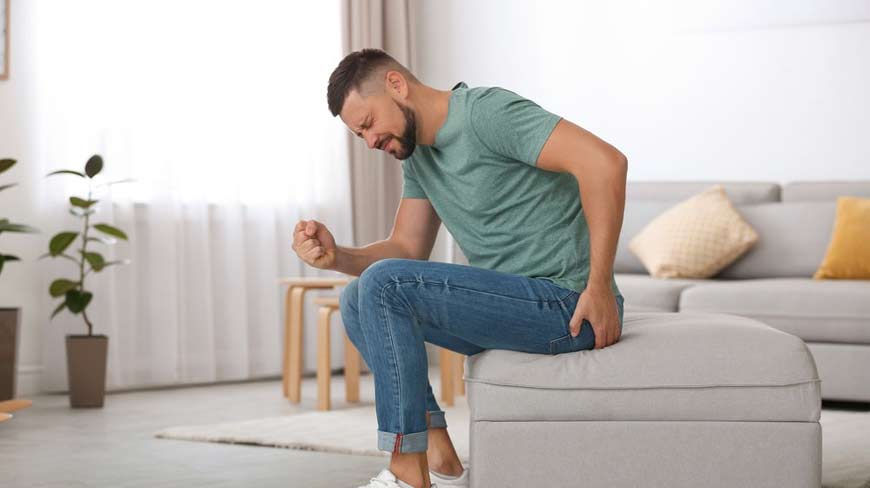Haemorrhoids can be treated in a variety of ways, depending on the kind of hemorrhoid and the degree of your symptoms. Haemorrhoids are typically treated by avoiding constipation. Simple dietary and lifestyle adjustments may also aid in the reduction of hemorrhoid symptoms.
A high-fibre diet can assist to soften and make stools easier to pass, minimising the need to strain during bowel movements. Fruits, vegetables, whole grains, beans, nuts, and seeds are all high in fibre. Adult women should consume at least 25 grams of fibre each day, while adult males should consume at least 38 grams, according to the Academy of Nutrition and Dietetics.
(1) Start slowly when adding fibre to your diet to avoid gas issues. Let’s help you know more about it before you go for piles operation.
Definition and Meaning of Piles
The dilated veins located around the anus are known as piles or haemorrhoids. Internal haemorrhoids (within the anal canal) and external haemorrhoids are two types of haemorrhoids (outside the anal canal). In its natural condition, these vascular structures act as cushions and aid in stool management. Piles is a condition in which the rectal or anal tissue becomes enlarged and eventually injured, resulting in discomfort, irritation, and bleeding.
- When passing a bowel movement, don’t strain or push too hard.
- Clean your anus by gently patting (rather than wiping) it with moistened pads, such as baby wipes, after each bowel movement. Using rough, dry toilet paper that may include scent might irritate the skin even more.
- Bath or shower with warm water every day to keep the area clean. After showering, pat the area dry carefully. You may even dry the region with a hair dryer.
- To help reduce the swelling of haemorrhoids and prevent new ones from growing, sit on cushions rather than hard surfaces.
- As required, use acetaminophen, ibuprofen, or aspirin over-the-counter (OTC) pain medicines.
The Different Types of Procedures for Piles Surgery
The doctor determines whether surgery with or without anaesthetic is required depending on the severity of the haemorrhoids. When anaesthesia is given, the patient has a regulated loss of consciousness or feeling for a short period of time.
Treatment for piles without anaesthetic
Piles therapy is frequently done in the doctor’s clinic in non-anesthetic procedures in the early stages of piles and is usually non-invasive. Let’s take a look at the four most prevalent non-anesthetic piles treatment options along with laser treatment for piles.
Banding
Rubber band ligation is a frequent term for a clinical technique performed to treat internal haemorrhoids called banding. Doctors usually do this surgery in two or more sittings, with each one occurring around two months apart.
Sclerotherapy
Sclerotherapy is a mild to non-painful piles treatment process that is performed without the use of anaesthetics. A chemical is injected into haemorrhoids during this operation, which causes the haemorrhoid to shrink while also stopping it from bleeding. This treatment is also commonly performed at a doctor’s office and is less dangerous.
Coagulation Therapy is a treatment for blood clotting.
This is the third form of non-anaesthetic piles treatment procedure, also known as infrared photocoagulation. The doctor employs infrared light, severe cold, or heat to reduce and retract the piles in this operation. Coagulation treatment is performed in a doctor’s office. When people are given coagulation therapy, they normally only feel minimal discomfort, which commonly comes in the form of cramping. The best general surgeon in Delhi NCR can guide you in this procedure perfectly .
Treatment for Anaesthetic Piles
If the piles are severe or prolapsed (descended), the doctor may decide to remove the haemorrhoids using general or spinal anaesthetic. The anaesthetic guarantees that the patient is pain-free during the procedure. For piles, there are three different types of anaesthesia procedures. They are as follows:
Haemorrhoidopexy with Staples
The stapled hemorrhoidopexy is the first form of anaesthetic piles surgery operation. In this operation, the doctor removes the haemorrhoidal tissue with a circular stapling equipment before closing the incision. Without creating an incision, the surgeon effectively removes the haemorrhoid and staples it back into place in the anal canal. This treatment typically results in reduced post-surgery discomfort and a quicker hospital release.
Haemorrhoids That Won’t Go Away Medical Procedures
- Medical procedures may be required if haemorrhoids do not respond to home remedies. If you visit your doctor with painful external haemorrhoids (those that are visible from the exterior of the anus), your doctor may offer to excise (cut them off) them during your appointment. Before the operation, you will be given a dose of local anaesthetic to numb the region.
- Medical procedures may be required if haemorrhoids do not respond to home remedies. If you visit your doctor with painful external haemorrhoids (those that are visible from the exterior of the anus), your doctor may offer to excise (cut them off) them during your appointment. Before the operation, you will be given a dose of local anaesthetic to numb the region.
- Infrared Coagulation is a type of infrared coagulation that occurs The doctor employs a powerful beam of infrared radiation to reduce the hemorrhoid in an office-based surgery. The heat from the light induces scar tissue to develop, cutting off the hemorrhoid’s blood supply.
Conclusion
Following hemorrhoid surgery, you should anticipate to be in pain for two to four weeks before returning to your regular self. Your doctor will most certainly prescribe pain medication, but sitting in a sitz bath for 10 to 15 minutes two to three times a day can also assist. For a few weeks following surgery, you may suffer minor bleeding with bowel movements. Call your surgeon if the bleeding does not stop after the bowel movement.
Haemorrhoids can be treated in a variety of ways. It’s advisable to talk to your doctor about the advantages and disadvantages of each of them before deciding on the treatment plan that’s right for you.

